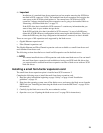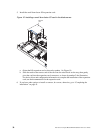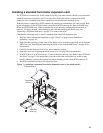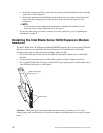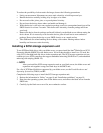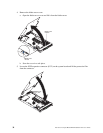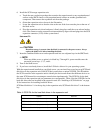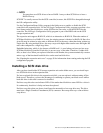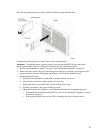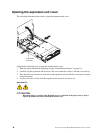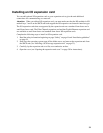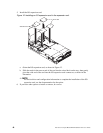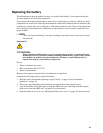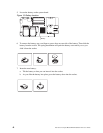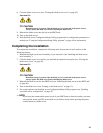
36 Intel Server Compute Blade SBX82 Installation and User’s Guide
✏ NOTE
You must have two SCSI drives to have a RAID-1 array or three SCSI drives to have a
RAID-1E array.
SCSI ID 7 is usually reserved for the SCSI controller; however, this SCSI ID is changeable through
the LSI configuration utility.
Use the Configuration/Setup Utility program in the blade server to enable or disable the SCSI
controller in the expansion unit. Use the LSI Logic Configuration Utility program to perform a low-
level format on the hard disk drives, set the SCSI device scan order, or set the SCSI ID for the
controller. The LSI Logic Configuration Utility program is part of the BIOS code on the SCSI
storage expansion unit.
The expansion unit supports RAID-1E, which is an alternative to RAID-10. When the number of
SCSI hard disk drives in a RAID-1E is even, the striping pattern is identical to RAID-10. Data for a
given file may be written in stripe units to different drives in the array, rather than being written to a
single drive. By using multiple drives, the array can provide higher data transfer rates and higher I/O
rates when compared to a single large drive.
Embedded mirroring, which is also known as RAID level 1, is used when you have two hot-swap
SCSI hard disk drives installed. Each drive is an exact copy of the other. Therefore, if either drive
fails, no data is lost. When you replace a failed drive with another, the system automatically creates a
mirror copy of the functional hard disk drive on the new hard disk drive.
See “Opening the expansion unit cover” on page 38 for information about starting and using the LSI
configuration program.
Installing a SCSI disk drive
After you have installed the SCSI storage expansion unit on the blade server, you can install up to
two SCSI disk drives in the expansion unit.
If a hot-swap hard disk drive in the expansion unit fails, you can replace it without turning off the
blade server. Therefore, you have the advantage of continuing to operate your blade server while a
hard disk drive in this unit is removed or installed.
Each hot-swap drive has two indicator LEDs. If the amber hard disk drive status LED for a drive is
lit continuously, that drive is faulty and must be replaced.
Each hot-swap drive that you plan to install must be mounted in a hot-swap-drive tray. The drive
must have a Single Connector Attachment (SCA) connector. Hot-swap-drive trays come with hot-
swap drives.




